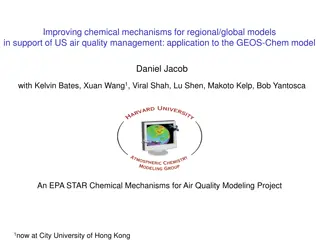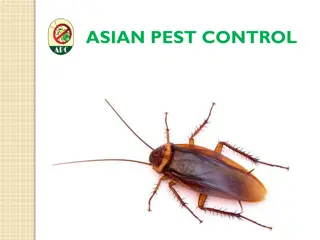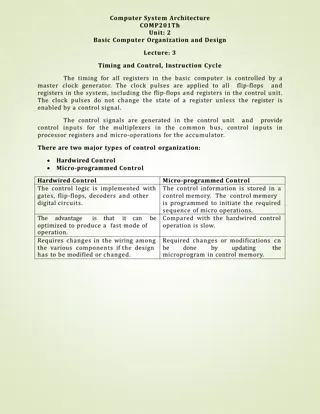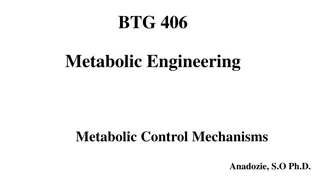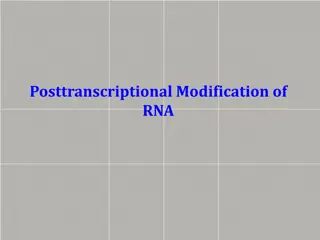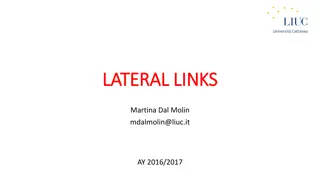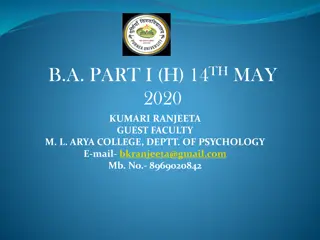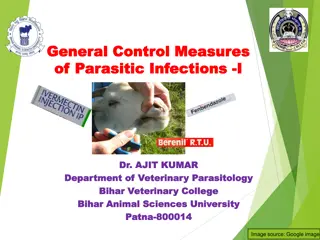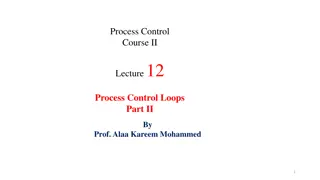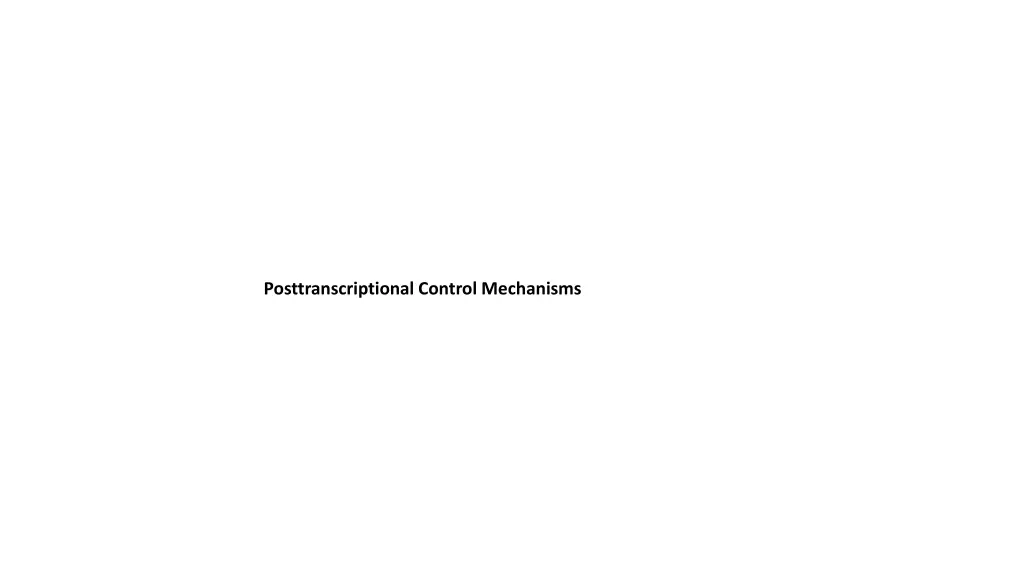
Posttranscriptional Control Mechanisms in Eukaryotic Cells
Explore the intricate posttranscriptional control mechanisms in eukaryotic cells, including mRNA degradation rates, regulatory roles of noncoding RNAs, RNA interference, and the significance of lncRNAs. Discover how mRNA stability is regulated through elements like poly(A) tail and 5' cap, and how RNA-binding proteins and RNA secondary structure influence mRNA degradation pathways. Uncover the essential functions of long noncoding RNAs and the catalytic activity of ribozymes in cellular processes.
Uploaded on | 3 Views
Download Presentation

Please find below an Image/Link to download the presentation.
The content on the website is provided AS IS for your information and personal use only. It may not be sold, licensed, or shared on other websites without obtaining consent from the author. If you encounter any issues during the download, it is possible that the publisher has removed the file from their server.
You are allowed to download the files provided on this website for personal or commercial use, subject to the condition that they are used lawfully. All files are the property of their respective owners.
The content on the website is provided AS IS for your information and personal use only. It may not be sold, licensed, or shared on other websites without obtaining consent from the author.
E N D
Presentation Transcript
Posttranscriptional Control Mechanisms Posttranscriptional Control Mechanisms mRNAs Are Degraded at Different Rates The range of mRNA stability in eukaryotic cells, measured in half-lives, varies from a few minutes to many hours or days. The mRNA molecules themselves appear to contain elements that dictate their decay rates. These elements include the poly(A) tail, the 5 cap, and sequences that are located within the coding region. A major route for mRNA degradation begins with the progressive removal of its poly(A) tail, a process catalyzed by deadenylases that appear to be located throughout the cytosol. When the residual poly(A) tail is less than 10 nt long and hence no longer capable of interacting with poly(A)-binding protein , the mRNA becomes a substrate for a decapping enzyme, which hydrolytically excises the mRNA s m7GDP cap. This is possible because, as we have seen, the translational initiation factor eIF4G interacts with both poly(A)-binding protein and cap-binding protein, thereby circularizing the mRNA so that events at its 3 end can be coupled to events at its 5 end. The decapped and deadenylated mRNA is then degraded by exonucleases. Proteins that bind to AU-rich elements (AREs) in the 3 untranslated region of the mRNA also appear to increase or decrease the rate of mRNA degradation. RNA secondary structure and RNA-binding proteins, which may be susceptible to modifi cation by cellular signaling pathways, play a role in regulating mRNA stability. mRNAs that cannot be translated due to the presence of a premature Stop codon are specifi cally targeted for degradation. RNA Interference Is a Type of Posttranscriptional Gene Silencing Noncoding RNAs can have important roles in controlling gene expression. antisense RNA (RNA that is complementary to a portion of an mRNA) prevents the translation of the corresponding mRNA because the ribosome cannot translate double-stranded RNA. RNA interferes with gene expression, this phenomenon is known as RNA interference (RNAi). RNAi is now known to occur in all eukaryotes except baker s yeast. In many cells, naturally occurring small RNA molecules, called short interfering RNAs (siRNAs) or microRNAs (miRNAs), depending on their origin, down-regulate gene expression by binding to complementary mRNA molecules. Thousands of miRNAs, ranging in length from 18 to 25 nucleotides, have been identifi ed in mammals, although their mRNA targets are only beginning to be characterized.
lncRNAs Have Essential Regulatory Functions. Long noncoding RNAs (lncRNAs; also called lincRNAs for long intervening noncoding RNAs) are RNAs of >200 nt (to distinguish them from short regulatory RNAs such as miRNAs) that, like mRNAs, are transcribed by RNAP II, 5 -capped, polyadenylated, and spliced, but do not encode proteins. However, it is becoming increasingly evident that many lncRNAs have crucial regulatory functions. Indeed, we have already met two such lncRNAs, Xist and Tsix RNAs, which participate in X chromosome inactivation
Catalytic RNA or Ribozyme Ribozyme has become a general term used to describe an RNA with catalytic activity, and it is possible to characterize the enzymatic activity in the same way as a more conventional enzyme. Some RNA catalytic activities are directed against separate substrates (intermolecular), whereas others are intramolecular, which limits the catalytic action to a single cycle. The enzyme RNase P is a ribonucleoprotein that contains a single RNA molecule bound to a protein. RNase P functions intermolecularly and is an example of a ribozyme that catalyzes multiple-turnover reactions The two classes of self-splicing introns, group I and group II, are good examples of ribozymes that function intramolecularly. Both group I and group II introns possess the ability to splice themselves out of their respective pre-mRNAs.
Group I Introns Undertake SelfSplicing by Transesterification



